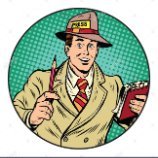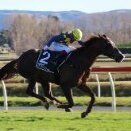-
Available Subscriptions
The Rest of the World
80,904 topics in this forum
-
- Journalists
Pullin Named Cheltenham Clerk
-
- Journalists
- 0 replies
- 132 views
-
-
- Journalists
- 0 replies
- 165 views
-
-
-
- Journalists
- 0 replies
- 106 views
-
-
- Journalists
Belmont Winner Sir Winston Triumphant in Return
-
- Journalists
- 0 replies
- 87 views
-
-
- Journalists
- 0 replies
- 147 views
-
-
-
- Journalists
- 0 replies
- 106 views
-
-
- Journalists
Stradivarius and Trueshan Spar in Lonsdale Cup
-
- Journalists
- 0 replies
- 100 views
-
-
- Journalists
- 0 replies
- 97 views
-
-
- Journalists
Ward Sends Out Promising Duo in Skidmore
-
- Journalists
- 0 replies
- 105 views
-
- Journalists
Maryland Hall of Fame Inductees Selected
-
- Journalists
- 0 replies
- 129 views
-
-
- Journalists
- 0 replies
- 114 views
-
-
-
- Journalists
- 0 replies
- 121 views
-
-
-
- Journalists
- 0 replies
- 108 views
-
-
- Journalists
Ward Bullish Golden Pal Can Blaze in Nunthorpe
-
- Journalists
- 0 replies
- 124 views
-
-
- Journalists
- 0 replies
- 102 views
-
-
-
- Journalists
- 0 replies
- 93 views
-
-
- Journalists
Team ThoroughBid Takes Racing League Lead
-
- Journalists
- 0 replies
- 98 views
-
- Journalists
Half-Sister To Almanzor Goes Again
-
- Journalists
- 0 replies
- 227 views
-
- Journalists
New York Trainer Orlando Noda Fined $5,000
-
- Journalists
- 0 replies
- 88 views
-
- Journalists
Ferraro Named Laffit Pincay Award Recipient
-
- Journalists
- 0 replies
- 132 views
-
- Journalists
Code of Honor Returns in Iselin at Monmouth Park
-
- Journalists
- 0 replies
- 108 views
-
- Journalists
Combatant Retired to Rockridge Stud in New York
-
- Journalists
- 0 replies
- 91 views
-
-
- Journalists
- 0 replies
- 107 views
-
-
- Journalists
Gormley Takes up Twin Legacies
-
- Journalists
- 0 replies
- 92 views
-
- Journalists
Delta Downs Releases Stakes Schedule
-
- Journalists
- 0 replies
- 122 views

